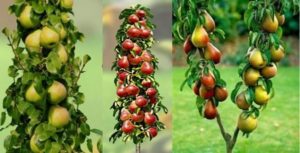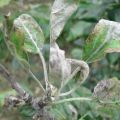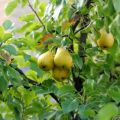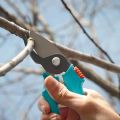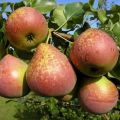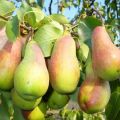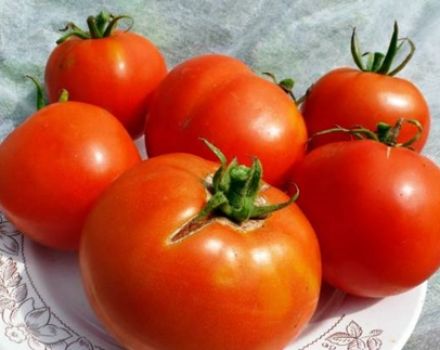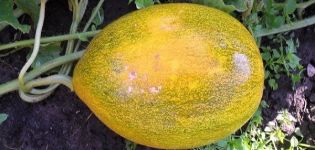Causes of a bacterial burn on a pear, treatment with antibiotics and drugs
Microscopic gram-negative bacteria, having entered Europe along with seedlings of fruit crops or flowers, began to quickly spread through the environment, moving with the help of flagella. Ervinia does not form spores, whole colonies appear during its division. The pathogenic microorganism multiplies rapidly during warm and humid weather, which accelerates the onset of fire blight on pears and many fruit crops. Gardeners do not immediately notice the problem, and often it is no longer possible to save the tree.
What is a fire blight?
Ervinia, having made her way into the bark, goes to the cambium, where it begins to divide. During winter frosts, most bacteria are killed. In the spring, together with the juice, the surviving microbes appear on the surface of the shoots in the form of a white liquid. The exudate contains sticks, which, with the help of insects, settle on the pistils of flowers and again infect the tree. In wet and dry weather, bacteria multiply every 20 to 30 minutes. Microorganisms are sent to the vessels, where they produce toxins that reduce the immunity of the plant. Ervinia penetrates flowers and ovaries, which leads to their death. Bacteriosis is most dangerous for a seedling.
Reasons for the appearance
Exudate, stretching into long threads, is transferred to other trees when pollinated by insects, wind, birds, and through wounds and cracks gets into cadmium. In humid and warm weather, bacteria are activated, and, developing inside the flower, infect the branches and then the trunk.
Sometimes microbes get on shoots or leaves along with splashes of water, and hide in a bole for the winter, in the spring they appear on shoots in the form of a milky liquid and begin to divide.
Factors affecting the spread of bacteria
It is difficult to recognize the presence of ervinia during the primary infection of the pear. And even when the disease progresses to the next stage, it is very difficult to determine that it is a bacterial burn.
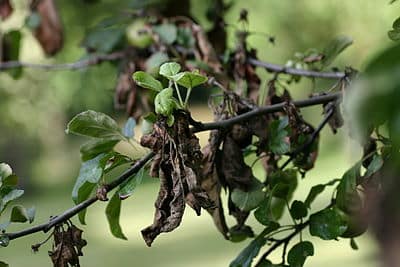
The rate at which anaerobic microorganisms attack a tree is influenced by:
- type of soil in the garden;
- climate and weather;
- varietal characteristics of pears;
- the age of the culture.
The disease starts from the top of the tree, and as a result, gardeners find the problem when most of the shoots and trunk are infected. When the leaves wither, people begin to water the tree much more often than before.Excess moisture contributes to the multiplication of bacteria, the spread of the disease.
The first signs of the disease
When infected with Erwinia in spring, the buds on the pear do not open for a long time and gradually turn black, but do not crumble from the branches. On an infected tree:
- Flowers wither and dry up.
- Leaves curl.
- The bark is covered with streaks.

As the fire blight progresses, a viscous white liquid begins to flow from cracks and wounds. When the wood peels off, the pear cannot be saved. She looks like she's been on fire.
Methods for dealing with bacterial burns
To identify the causative agent of the disease and begin treatment, the ends of the branches and bark of a wilting tree are taken to a special laboratory, where they begin bacteriological sowing. To cope with an infection caused by ervinia, not one, but several methods of eliminating it are used, each of which has its own advantages, but not without its disadvantages.
Before using any of the methods, the infected shoots are removed by lubricating the cut area with copper sulfate. With extensive damage, the tree is dug up and burned.
Chemical method
If signs of a bacterial burn are found, when it appears, pears are treated with fungicides, which contain copper, - "Oksikhom", "Skor", "Rovral", or sprayed with vitriol, adding to a 1% solution of the drug in milk made from quicklime ...
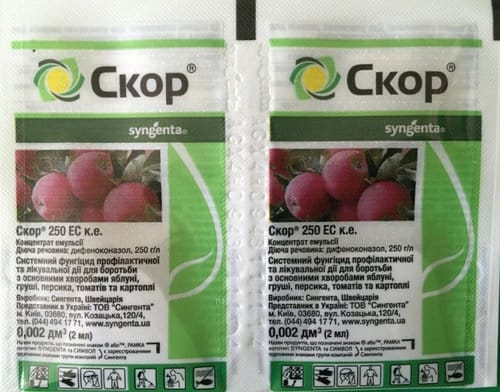
The procedure is started:
- Before the kidney swells.
- When foliage appears.
- After flowering.
- When forming the ovary.
The last processing is performed in the fall, having collected all the fruits. It is not always possible to cure the pear using this method, since Ervinia quickly gets used to the drugs.
The radical method
If a fire blight is found on one plant, it is destroyed to preserve the garden. If only branches or 1/3 of the tree are infected, the infected shoots are removed, capturing up to 40 cm of healthy tissue. The sections are treated with copper sulfate, stirring half a glass of the substance in a bucket of water. Ferrous sulfate is suitable for this purpose, 70 g of the product is enough for 10 liters.

The infected parts of the pear are burned, they cannot be stored and used as firewood. Instruments after the procedure are disinfected in potassium permanganate or dichloramine.
Antibiotic use
Very often, treatment with fungicides in the fight against a disease caused by an anaerobic microorganism turns out to be ineffective, and it is necessary to use antibacterial drugs that are sprayed on the whole tree, not missing healthy areas.
"Fitolavin"
This agent serves as a waste product of actinomycetes and combines the functions of a biological fungicide with the action of an antibacterial drug. Penetrating into the tissue of the tree, "Fitolavin" spreads through their vessels, but does not accumulate in the ground, it helps to strengthen the root system of the pear. After the treatment of the plant with the drug, beneficial microorganisms also die.
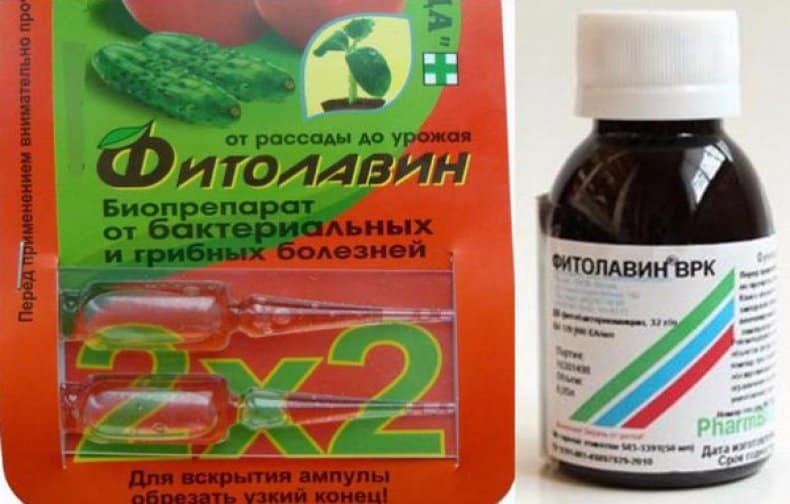
To prepare the solution, 20 ml of "Fitolavin" is added to a bucket with settled water, the leaves are sprayed with the composition, and the near-stem circle is watered. The product quickly loses its properties, pears must be processed within 2-3 hours.
"Tetracycline"
When the first signs of bacterial burn infection appear, a tablet of this antibiotic containing 100 g of the active ingredient is mixed with water. The tree is sprayed one time.
"Gentamicin"
A drug from the aminoglycoside group destroys gram-negative bacteria and is active against Erwinia amylovora. To prepare a composition for processing pears, 2 ampoules of "Gentamicin" are combined with 1 liter of water. The tree is sprayed three times, the interval after the procedure is observed for 5 days.
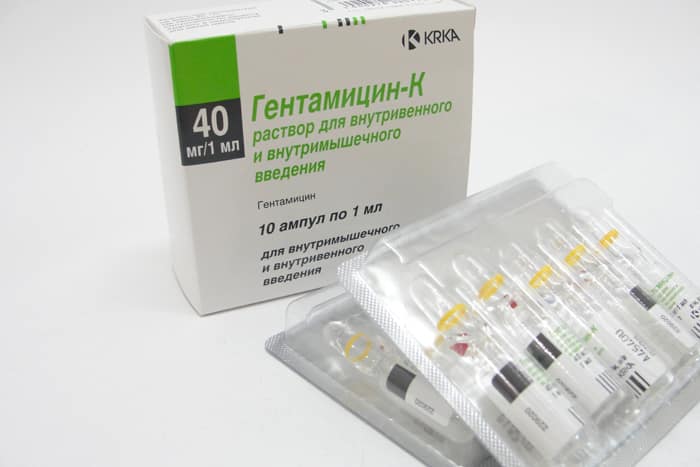
"Streptomycin"
This antibiotic is used to treat industrial plantings because it is inexpensive.In order to spray 10 plants, 5 liters of the composition made from water and an ampoule of Streptomycin is enough.
The remedy cannot be used for 2 or 3 years in a row, it is better to alternate it with Gentamicin, since Ervinia gets used to the active ingredient and it stops helping. How to dilute the preparation for spraying pears is indicated in the annotation, if you buy such antibacterial agents not in a pharmacy, but in specialized horticultural centers.
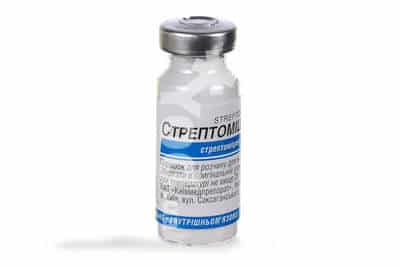
About folk and alternative methods
Infection of a tree with a bacterial burn is fraught with its death. It is impossible to destroy the causative agent of the disease by spraying the plant with decoctions of celandine or infusion of garlic and other folk remedies. Agronomists advise first to destroy harmful microorganisms, and then restore useful microflora in the garden.
For the prevention and treatment of bacterial and fungal diseases, the following is used:
- "Trichodermin". The mycelium spores present in it germinate into the soil. Allocating toxic substances in the process of their vital activity, they destroy pathogenic microorganisms.
- "Pseudobacterin", which is produced on the basis of a living culture of the microbe, negatively affects the harmful flora, accelerates the growth of trees.
- "Mikoplant" acts as a fungicide, improves the formation of vermicompost in the ground.

Some gardeners in spring water pears with Previkur Energy, although the agent is intended to protect vegetable crops from diseases, it strengthens the immune system of trees, and prevents the growth of microbes.
Resistant varieties
Among the hundreds of types of pears, there are those that are less likely to become infected with a bacterial burn. In regions where the disease has begun to actively spread, it is advised to plant an autumn early-growing Potomac variety, bred in the United States.
The pear of Ukrainian selection Yablunivska is resistant to fungal diseases; it is practically not affected by scab and bacterial burns.
Late cultivars Maria and Noyabrskaya have good immunity to Erwinia amylovora infection.
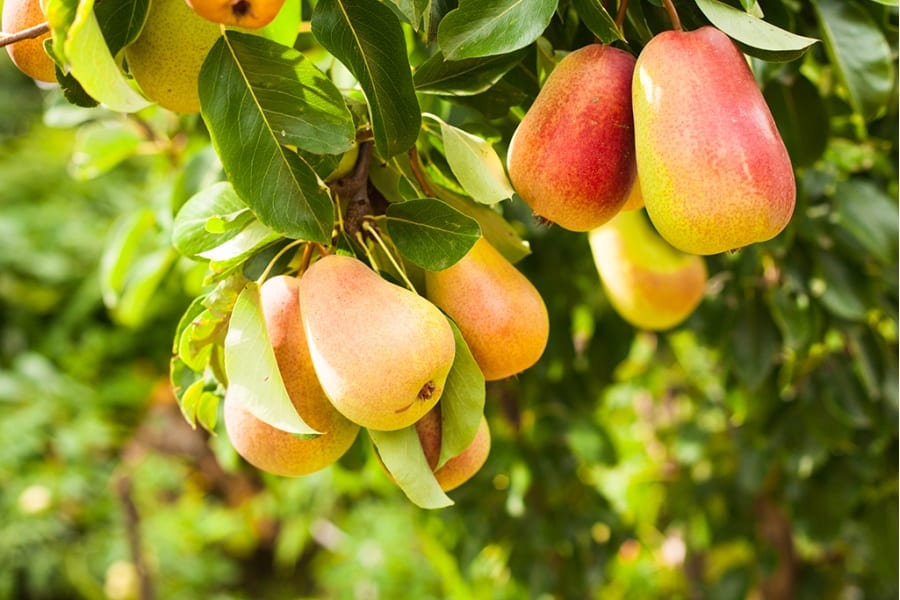
Preventive actions
It is very difficult to cure a pear from a bacterial burn, and it turns out only in the early stages. If the whole tree is blackened, fighting does not guarantee a positive outcome.
Prevention can help reduce the risk of infection with Erwinia, which includes:
- uprooting wild bushes in the garden;
- weed removal;
- spraying pears with copper preparations.
Blackened trees must be immediately disposed of so that the infection does not spread to other crops. Do not get carried away with watering, bacteria and fungi love damp soil. You can not overfeed pears with organics, mineral complexes. Regular sanitary pruning reduces the likelihood of contracting the disease.
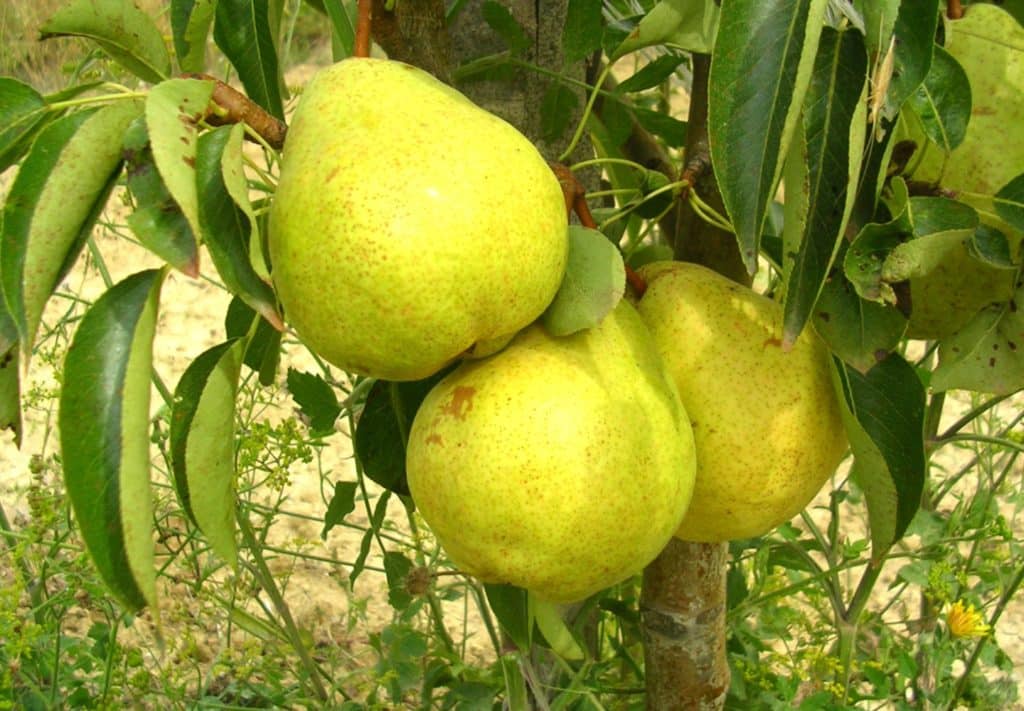
Competent choice of a seedling
A tree for growing in a suburban area or dacha must be purchased in a nursery. It is advisable to find out from which region it was brought, and find out if there are cases of infection with a bacterial burn. You shouldn't risk buying seedlings from Belarus, Tambov and Saratov regions. A healthy young tree has no scratches on the stem, the roots are not damaged, and the pear itself has an even light brown color.
When choosing seedlings, it is worth giving preference to varieties that are resistant to infection with a bacterial burn:
- Maria;
- Potomac;
- Williams;
- Carmen.
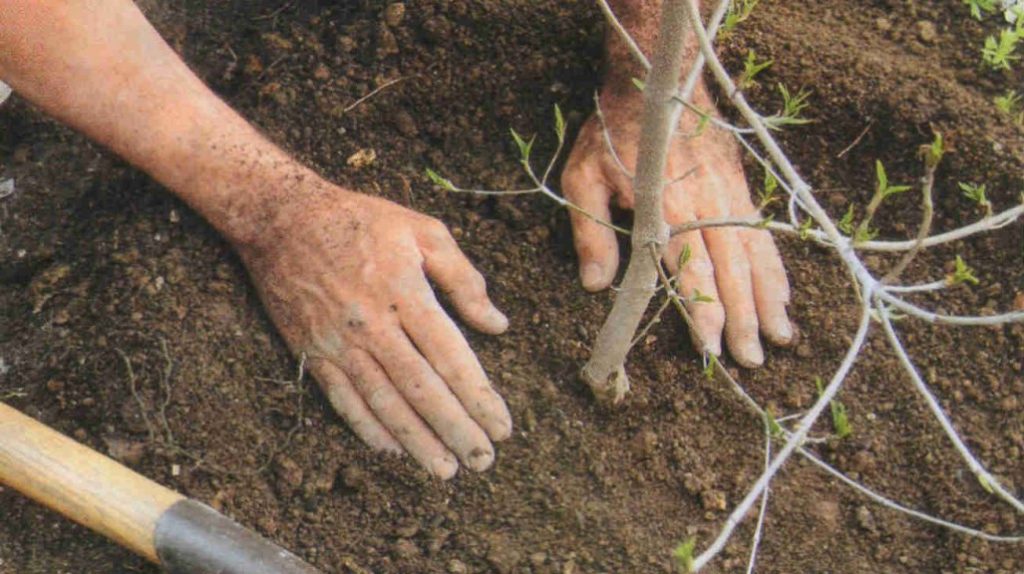
We must not forget that when treating trees with the same compounds, pathogenic microorganisms can get used to them, and even worse, mutate. Fungicides should be changed more often.
In early spring, pears are sprayed with Bordeaux liquid, dried and diseased shoots are removed, lubricating the cuts with garden pitch. In the summer, in order to stimulate the defenses of the plant, biological products such as "Zircon" are used.In regions where fire blight occurs, pears are sprayed with antibiotics for prevention.
Pest control
Caterpillars, butterflies, beetles transmit infection by affecting leaves and branches, and contribute to a decrease in the defenses of trees. When aphids, moths, spider mites appear, pears and the soil on which they grow are treated with insecticides, since some pests lay eggs in the near-trunk circle, and larvae start in the ground.
Disinfection of garden tools
When shortening shoots, a pruner or a sharp knife is used; when uprooting pears affected by diseases, a saw cannot be done without. Mycelium spores and bacteria remain on the instruments and then transferred to healthy trees. To prevent this from happening, the cutting parts are disinfected in a solution of potassium permanganate, alcohol, kerosene.
